IAMBIC uses a data-driven approach to design. Each pair begins with a 3-image smartphone scan and a short comfort profile, creating a digital last unique to you. The result is a fit measured in millimeters and finished by European artisans for lasting comfort.
Recognized by TIME as one of the Best Inventions of the Year and supported by the U.S. National Science Foundation.
Not ready to purchase? Begin with the Fit Guide Quiz to discover your personalized fit profile.
The complexity of the human foot
The foot is one of the most intricate structures in the body, made up of 26 bones, 33 joints, and over 100 muscles, tendons, and ligaments, as detailed in The Science of Footwear. These interconnected components absorb up to three times body weight with every step and provide balance, agility, and shock absorption, as explained in the Journal of Orthopaedic & Sports Physical Therapy. This intricate architecture supports both mobility and endurance, yet traditional footwear rarely accommodates its complexity.
Feet continue to evolve throughout life. Studies from Harvard Health and Healthline report that age, pregnancy, weight changes, and genetic factors alter ligament tension and reduce the fat pads that cushion the foot. The Cleveland Clinic also notes that ligaments loosen and arches flatten with age, causing many adults to experience an increase in both length and width. Meanwhile, population data from the Wall Street Journal show that average shoe sizes in the U.S. have grown nearly an inch since the 1970s, driven by improved nutrition and lifestyle shifts. Despite these changes, most footwear still follows outdated sizing templates designed for a past generation of wearers.

Shoe lasts and the fit crisis
Shoemaking begins with a “last,” the three-dimensional mold that determines a shoe’s interior shape. Historically, artisans shaped lasts to reflect human variation, but research from footwear designer Natacha Alpert and historian Chen shows that industrialization simplified this process to prioritize efficiency over anatomical accuracy. By the 1970s, most brands had reduced their sizing options to a single standard width per length, and as NPR reported, 99 percent of shoes sold in the United States are now imported from large-scale factories in China and Vietnam.
This shift to offshore, mass production created a supply chain that is slow to adapt. Despite the rise in average shoe sizes, manufacturers continue to produce narrow ranges, and retailers hesitate to stock larger or alternative fits. Without wider data, brands cannot innovate, creating a cycle that perpetuates discomfort for consumers. This mirrors findings from Dr. Hylton B. Menz, who has documented how ill-fitting footwear contributes to chronic pain and musculoskeletal imbalance. He notes that a data-led approach to fit could transform mobility and quality of life for millions of people.
For modern professionals, this is more than a comfort problem. Misfit footwear affects energy, posture, and concentration during long days of meetings and travel. Inadequate support can subtly reduce performance over time, which is why fit precision is becoming essential to executive wellness.
Why current fit standards fall short
Even with better data, traditional sizing frameworks remain flawed. Most systems still base their measurements on the last rather than the foot itself. As explained in SATRA Bulletin, factors like toe allowance, material flexibility, and padding alter the actual fit, meaning the same numeric size can feel entirely different between brands.
In the 1970s, SATRA developed the Mondopoint system to standardize measurement by using foot length and width rather than the internal dimensions of the shoe. It was a critical step toward true accuracy, but widespread adoption stalled due to poor alignment among manufacturers and retailers. As researchers Andrew Buldt and Hylton Menz observed in the Journal of Foot and Ankle Research, the result is that nearly three-quarters of people still wear shoes that do not match their feet.
Today, emerging technology offers a solution. Smartphone scanning, AI modeling, and digital last generation make it possible to create a one-to-one relationship between a foot and a shoe. This transition to biometric design could redefine both comfort and sustainability by reducing waste and improving the health of wearers everywhere.
Learn more about how this process works in How Custom-Fit Shoes Work and explore the real-world difference in Allen Edmonds E-Width Fit Issues.
Toward a future of better fit
The footwear industry’s dependence on outdated sizing affects not only comfort but also long-term health, business performance, and environmental impact. As footwear innovator Natacha Alpert notes, “We are in a new era where fit, customization, and comfort are increasingly valued as priorities.” Innovations such as 3D scanning, generative design, and additive manufacturing are paving the way for shoes that are made to each person’s unique anatomy.
IAMBIC brings this future to life. Each pair begins with a digital scan that models more than twenty biometric variables per foot. Advanced AI transforms this data into a digital last that mirrors your natural geometry, ensuring balance and endurance with every step. Crafted in Portugal from premium materials, each MODEL T represents the union of biomechanics, design, and craftsmanship.
Explore how walking precision supports daily focus in Walking and Executive Performance or see how leaders are redefining comfort in Custom Executive Shoes and Power Casual Comfort.
Exploring your options? Take the Fit Guide Quiz to see how your data becomes your precision fit.
Dr. Hylton B. Menz
Dr. Hylton Menz is a globally recognized podiatry researcher and professor at La Trobe University in Melbourne, Australia, whose work bridges the clinical science of human movement, aging and mobility with applied biomechanics and footwear design. He is regarded as the most-cited researcher in the field of footwear and its impacts on the human body.
Natacha Alpert
Natacha Alpert is a pioneer in 3D footwear design and founder of the Footwearology innovation lab. With experience leading digital transformation at major luxury brands, she advises IAMBIC on how additive manufacturing and AI can redefine personalization, sustainability, and craftsmanship in executive footwear.
FAQs
How is IAMBIC different from “wide” sizing?
Wide sizing adds surface width but ignores depth and volume. IAMBIC captures your full geometry with 3D scanning, accounting for ball girth, arch height, and heel shape before crafting your pair.
Do I need to take the Fit Guide Quiz before ordering?
No. You can order directly from the MODEL T page or take the Fit Guide Quiz for a guided introduction.
How long does it take?
Most pairs ship within four to six weeks after your virtual consultation. Read How Custom-Fit Shoes Work for details.
What benefits should I expect on long days?
Improved posture, reduced strain, and steady comfort during long meetings, flights, and commutes. Learn more in Walking and Executive Performance.
Is my data secure?
Yes. Your scan and comfort data are encrypted and used only for design and fit improvement. Visit our Technology page for details.
Helpful links
Sources
- Buldt, Andrew, and Hylton Menz. “Incorrectly fitted footwear, foot pain and foot disorders.” Journal of Foot and Ankle Research, 11:43 (2018).
- Goonetilleke, Ravindra S. The Science of Footwear. CRC Press, 2013.
- Saltzman, Charles L., and Deborah A. Nawoczenski. “Complexities of Foot Architecture as a Base of Support.” Journal of Orthopaedic & Sports Physical Therapy, 1995.
- Farris, Dominic James, Luke A. Kelly, Andrew G. Cresswell, and Glen A. Litchwark. “The functional importance of human foot muscles for bipedal locomotion.” Proceedings of the National Academy of Sciences, 2016.
- Harvard Health Publishing. “Why your feet get bigger as you age.” 2018.
- Marks, Julie, and William Morrison. “All About Wide Feet: Why You Have Them, Concerns, Footwear, and More.” Healthline, 2019.
- Cleveland Clinic. “Shoes Getting Tight? Why Your Feet Change Size Over Time.” Health Essentials, 2020.
- Holmes, Elizabeth. “Feet Are Getting Bigger.” The Wall Street Journal, 2014.
- Alpert, Natacha. Interview by Frank Mojica, 2021.
- Bayes, Tom. “New SATRA fitting aids.” SATRA Bulletin, 2020.

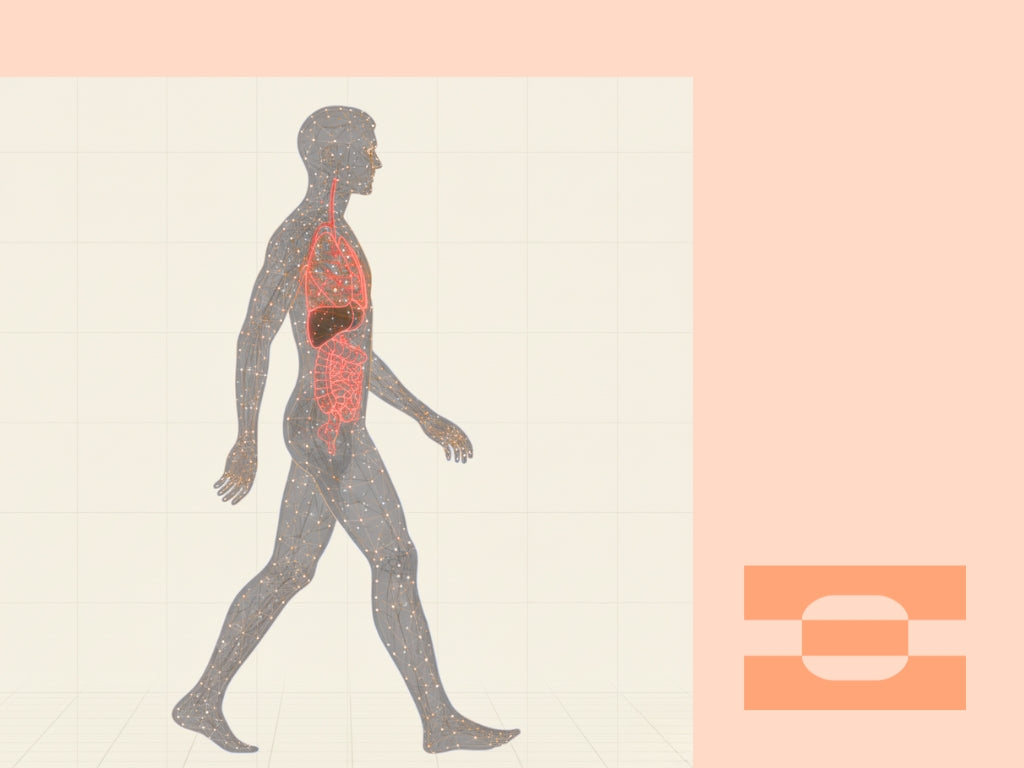
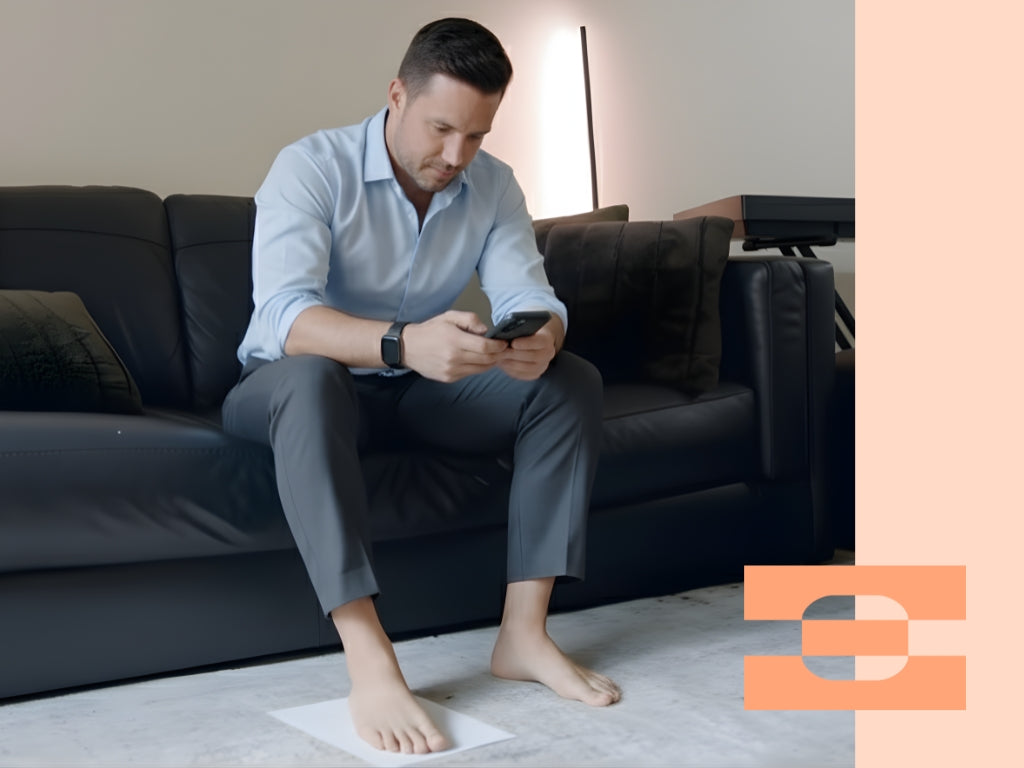
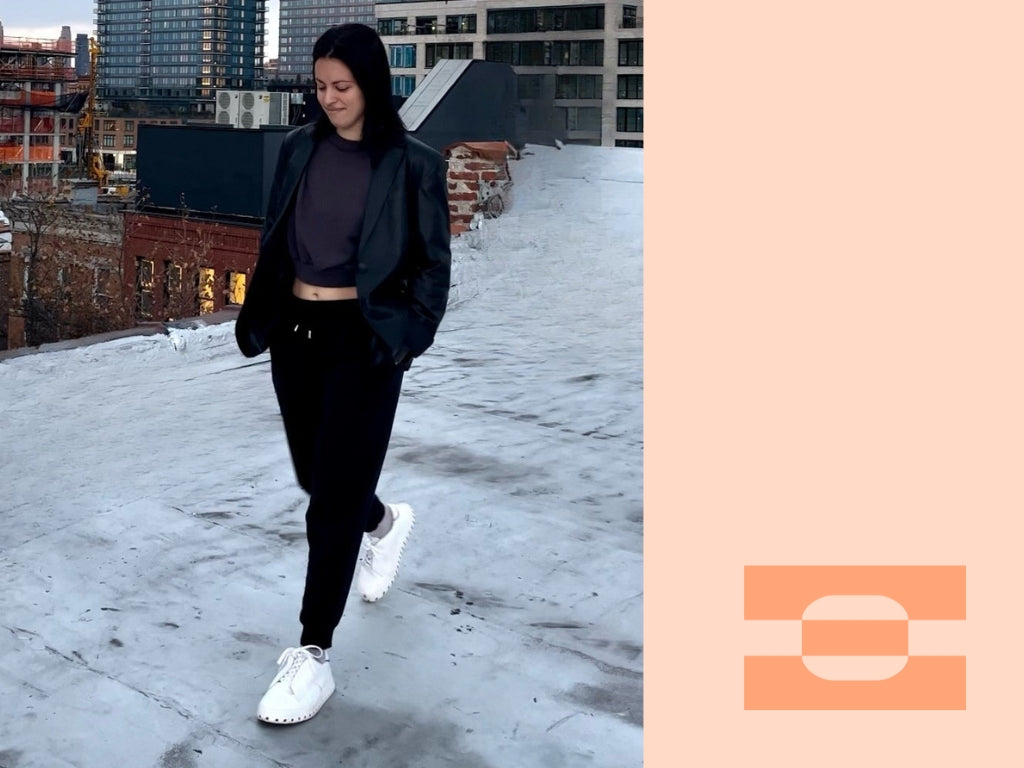

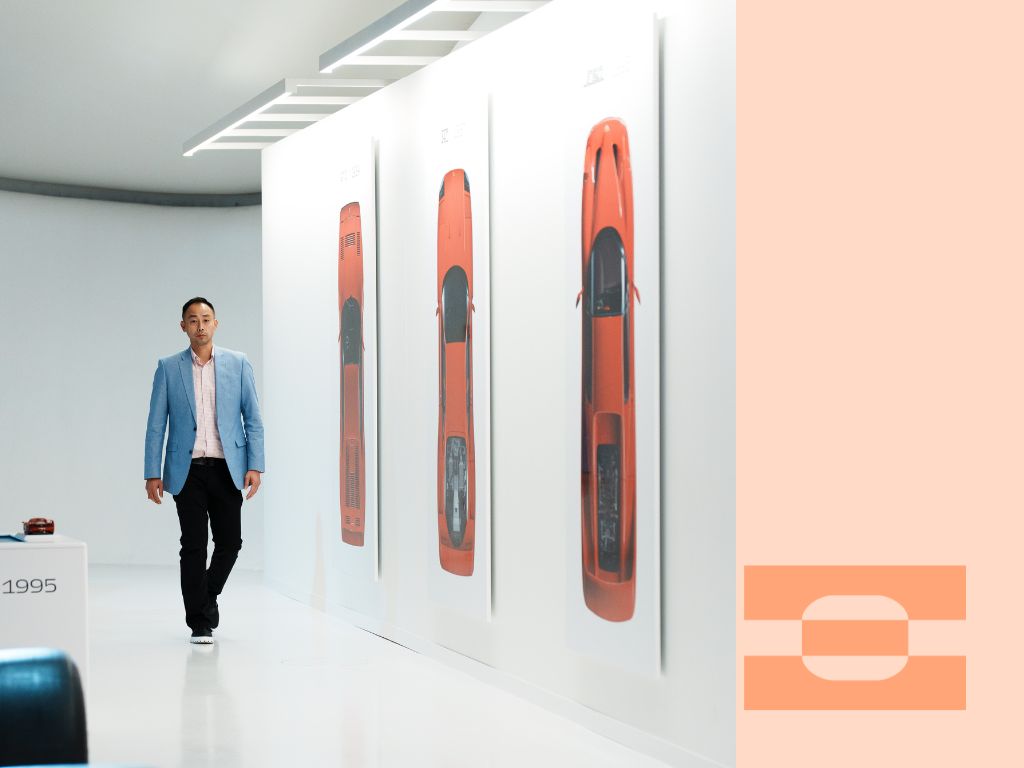

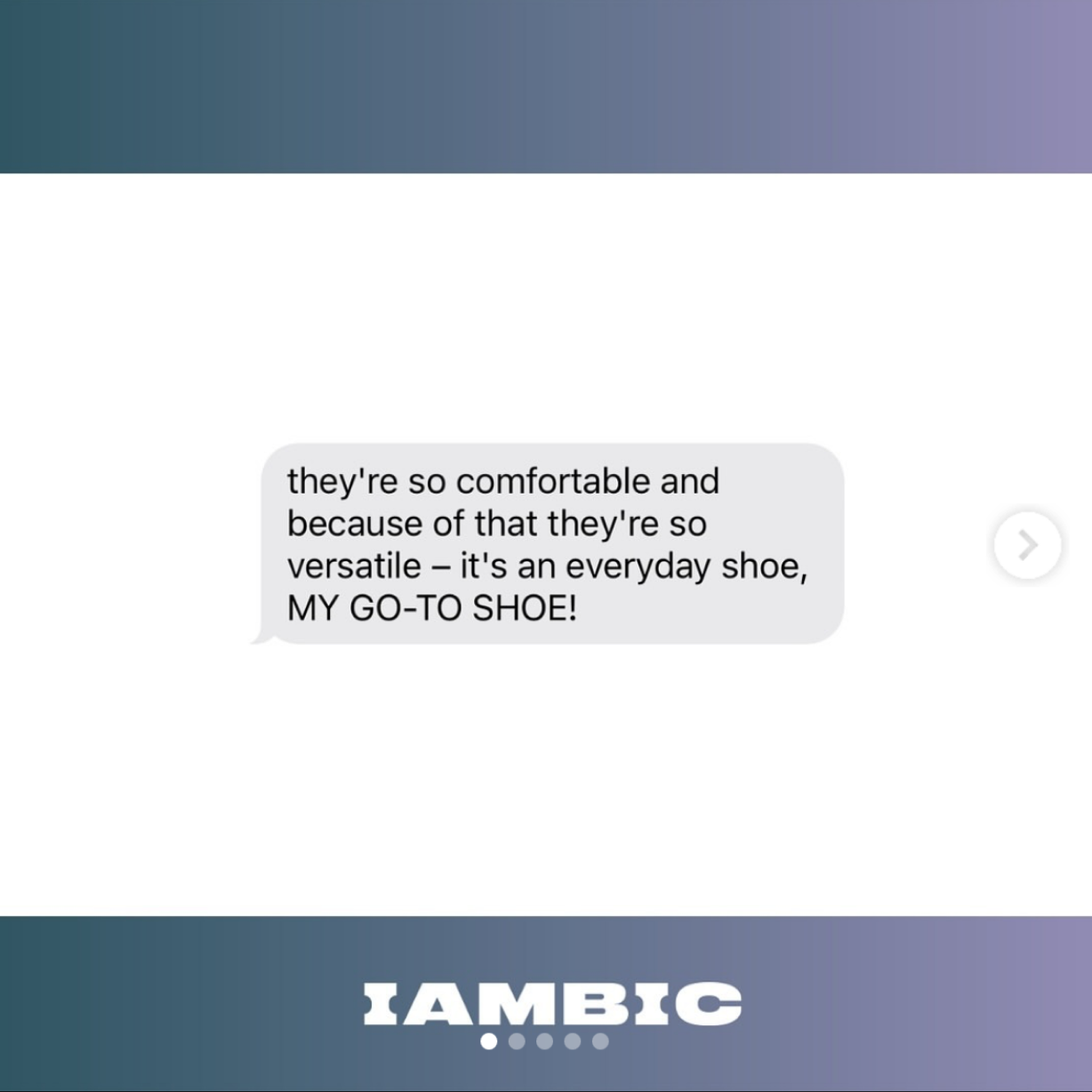
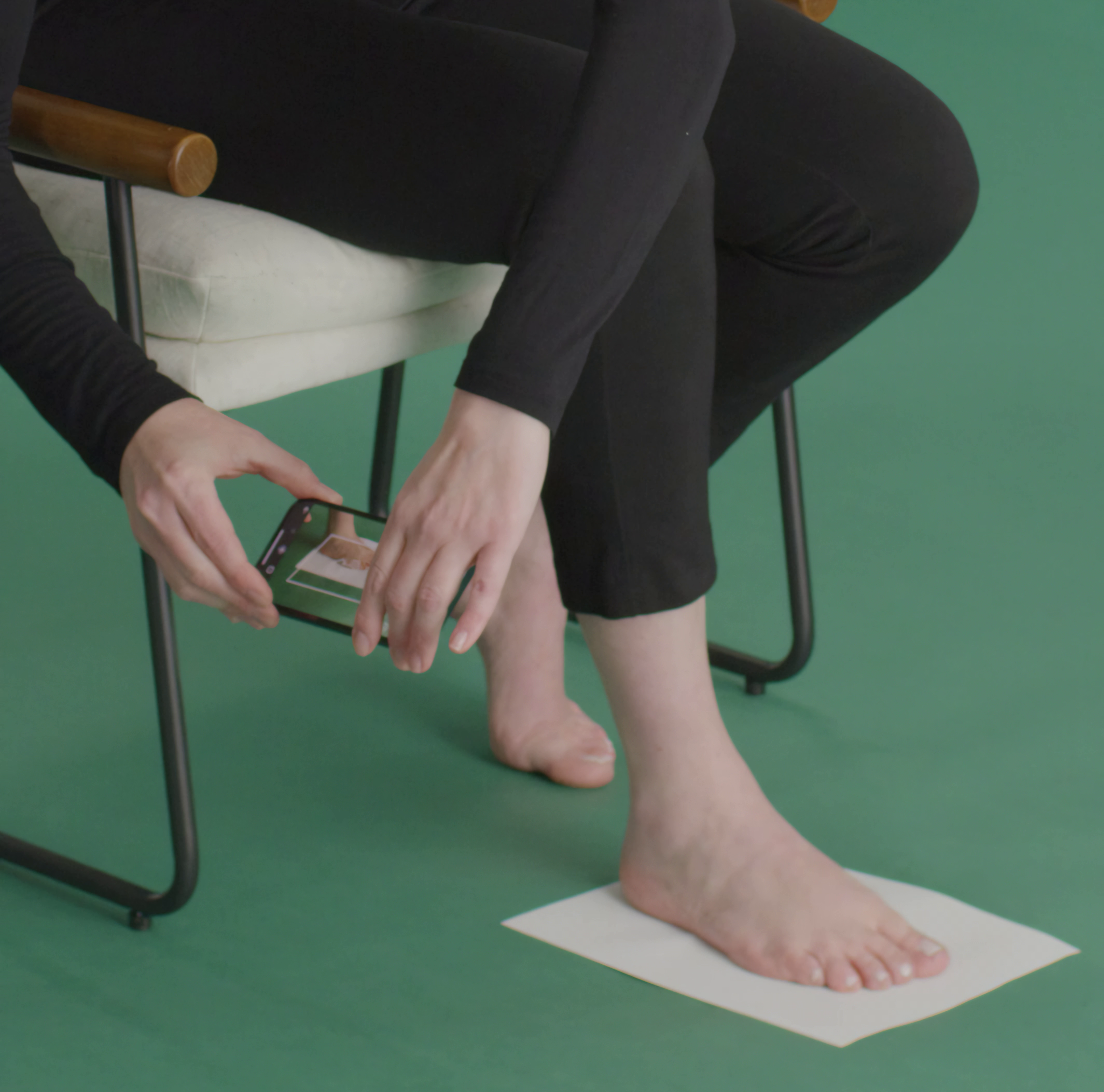

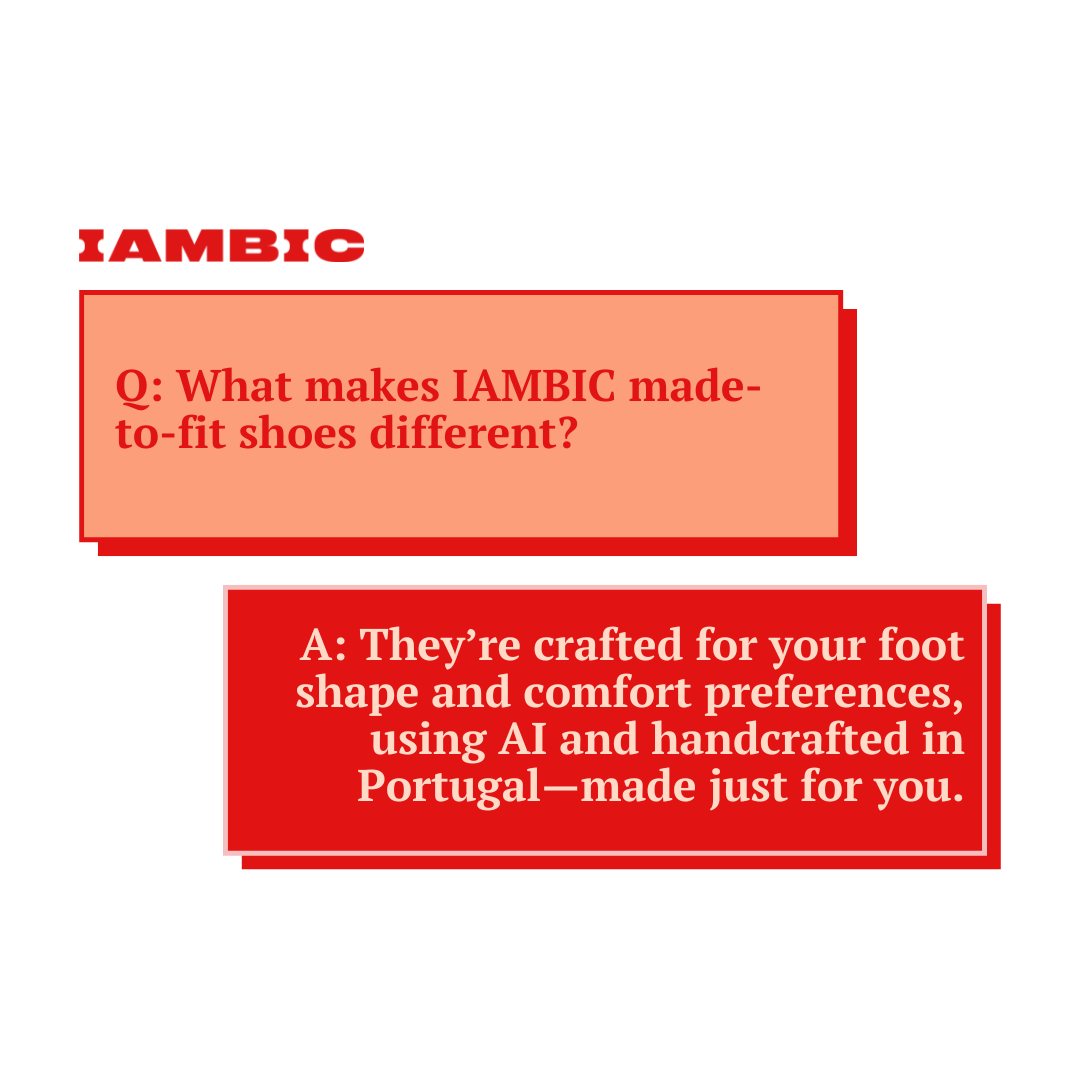
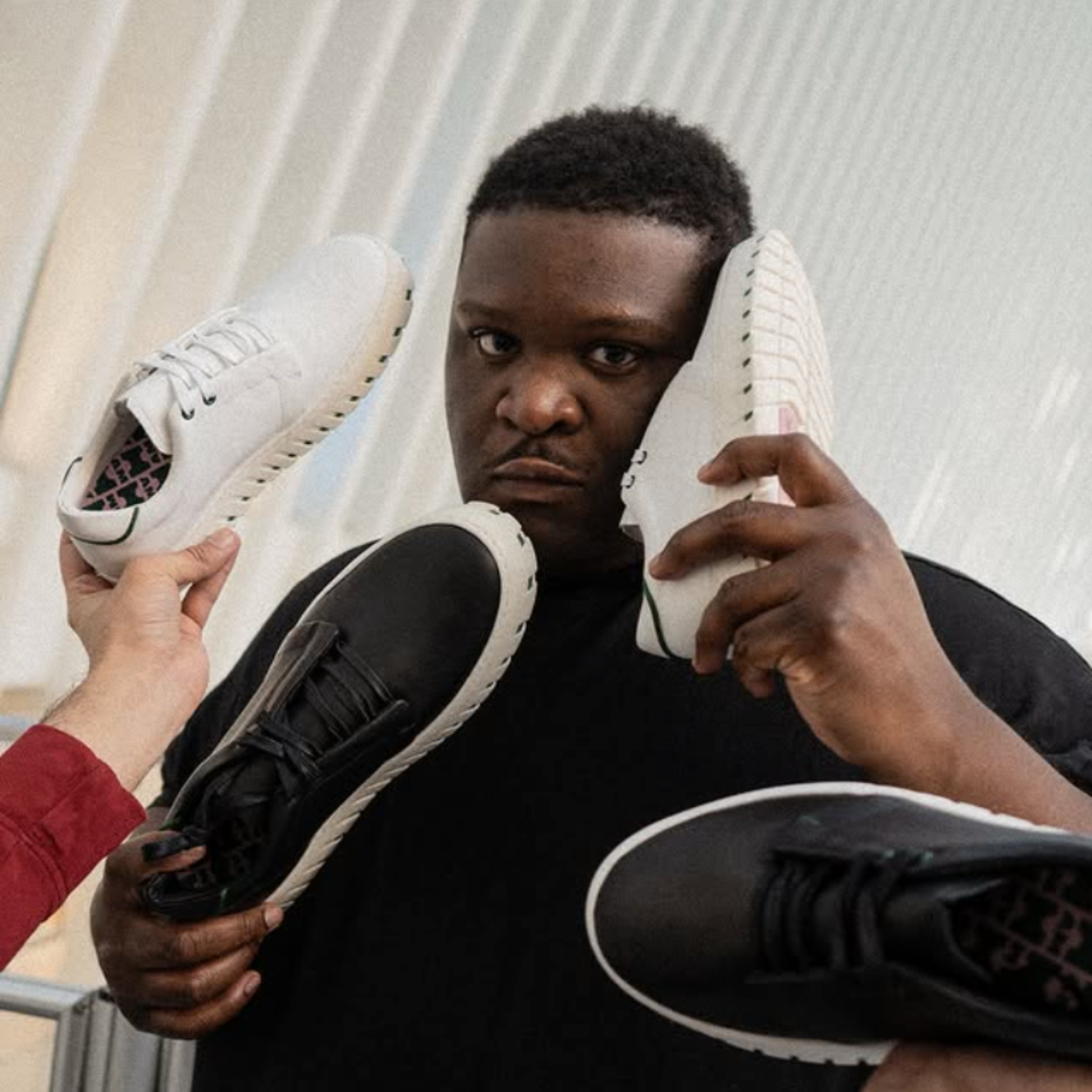
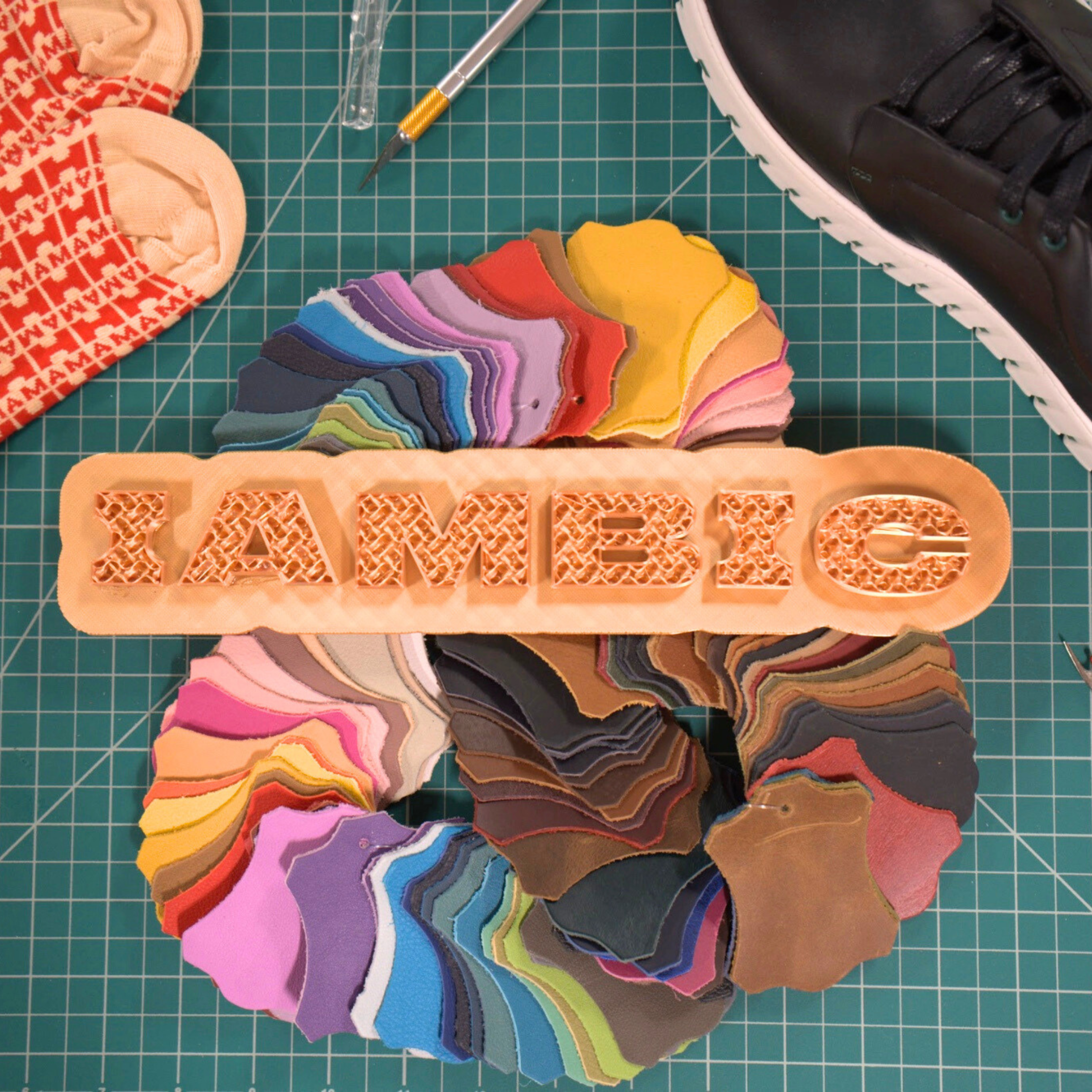

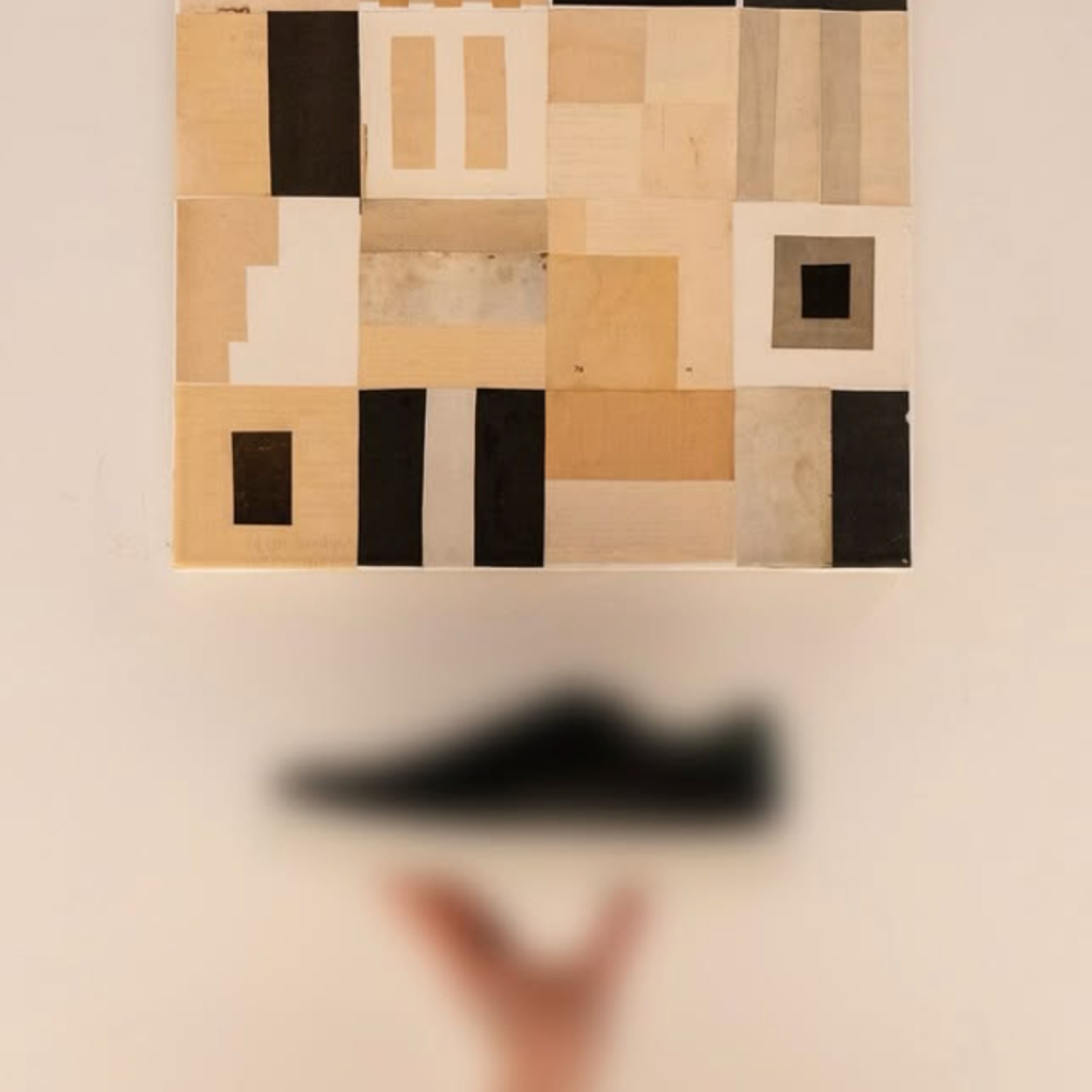

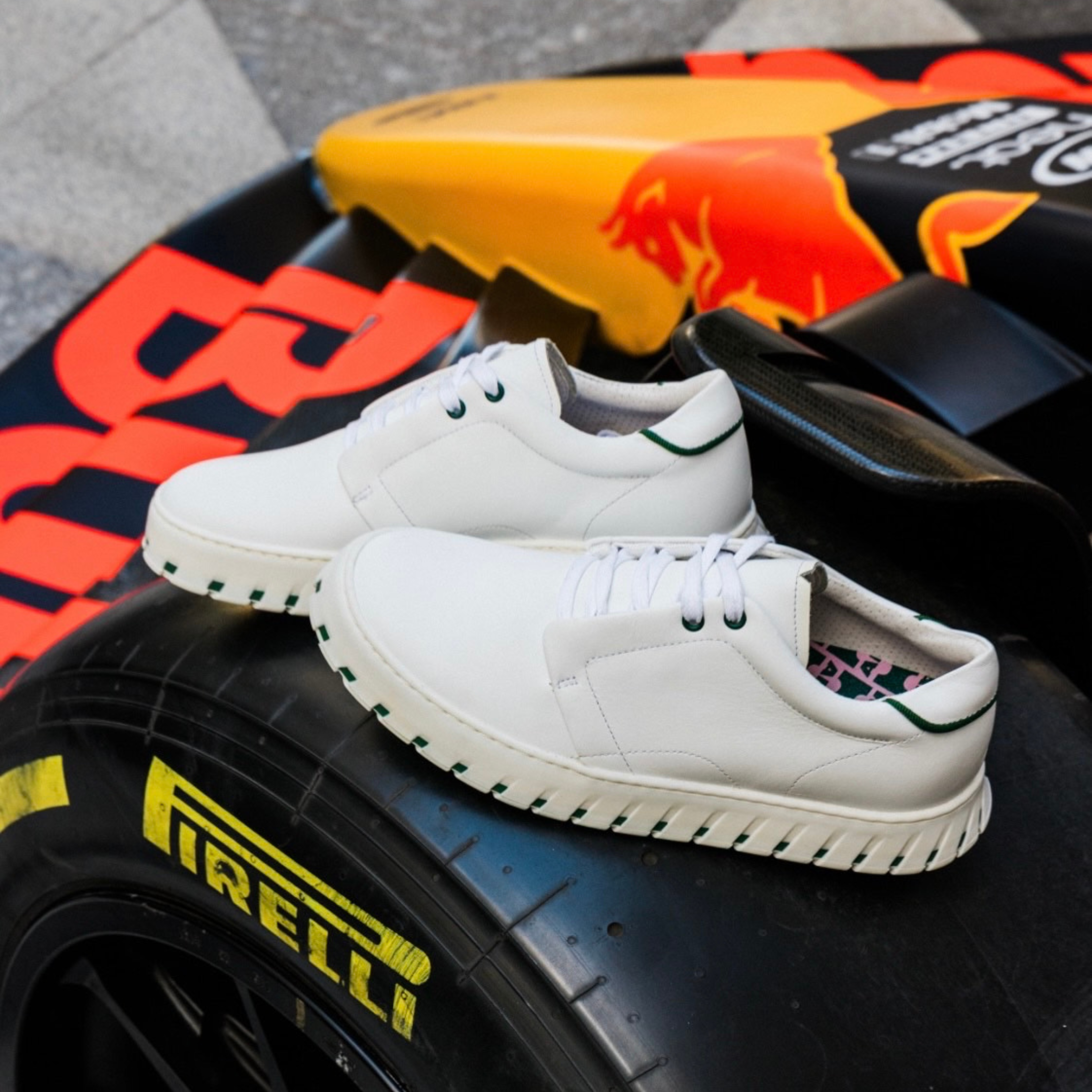
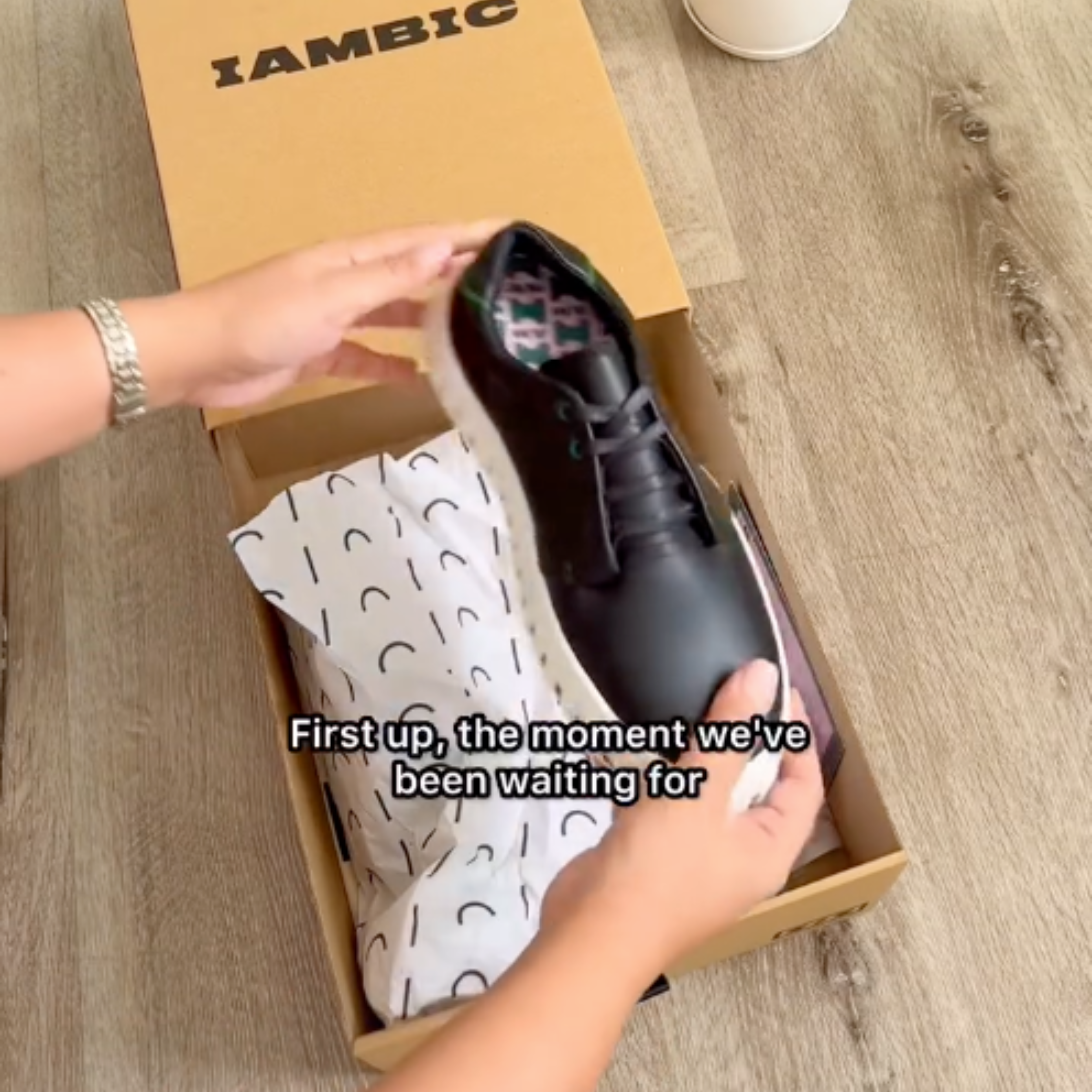
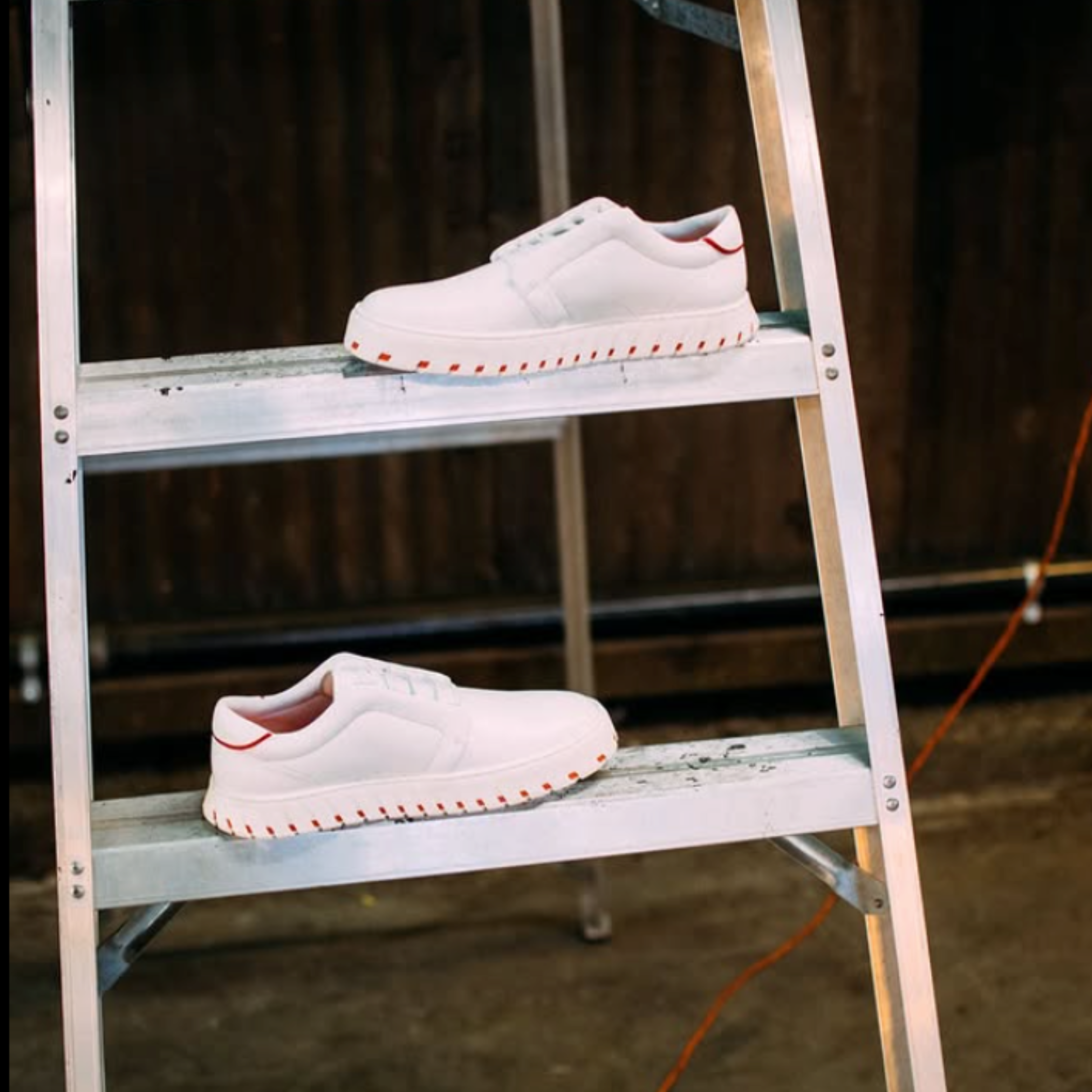
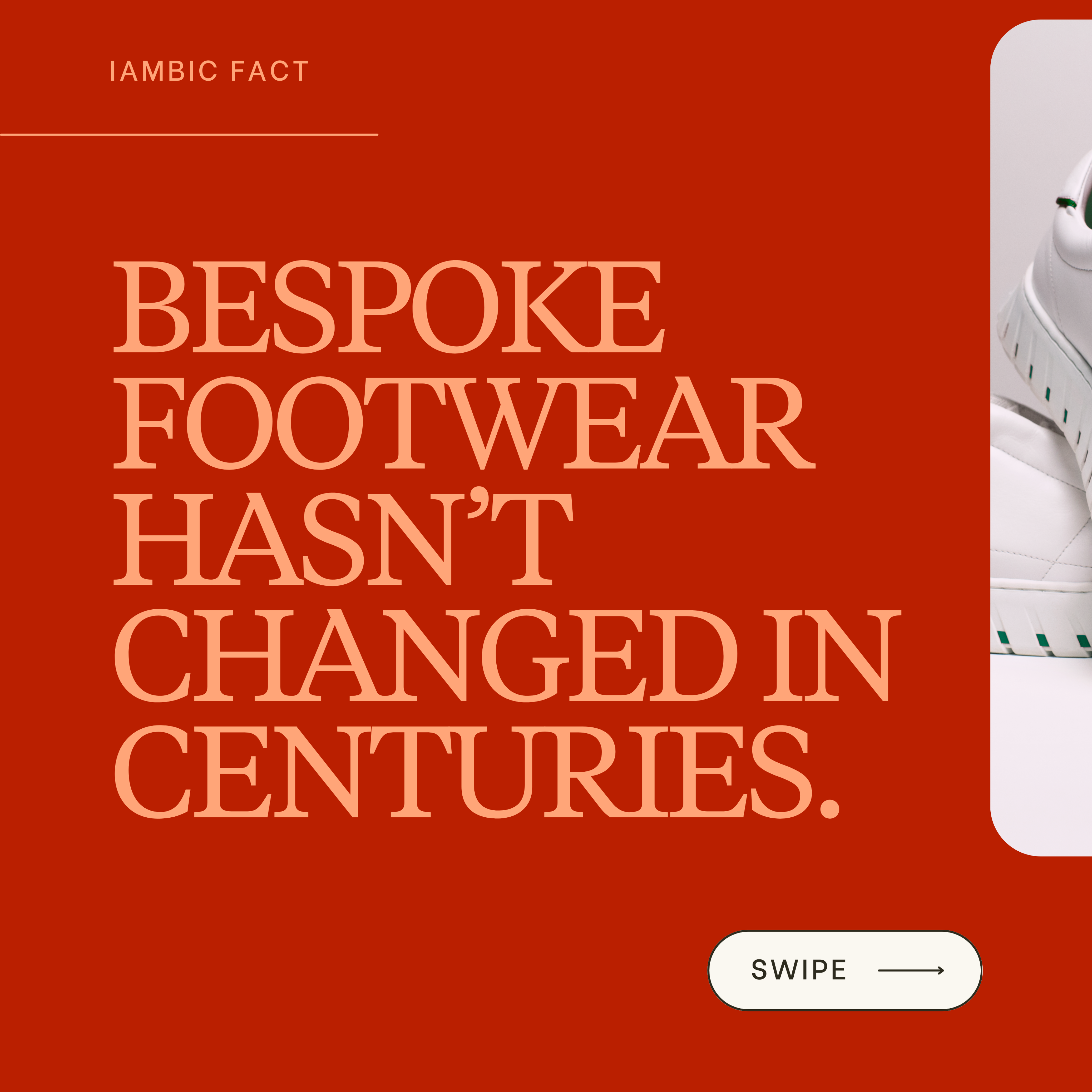
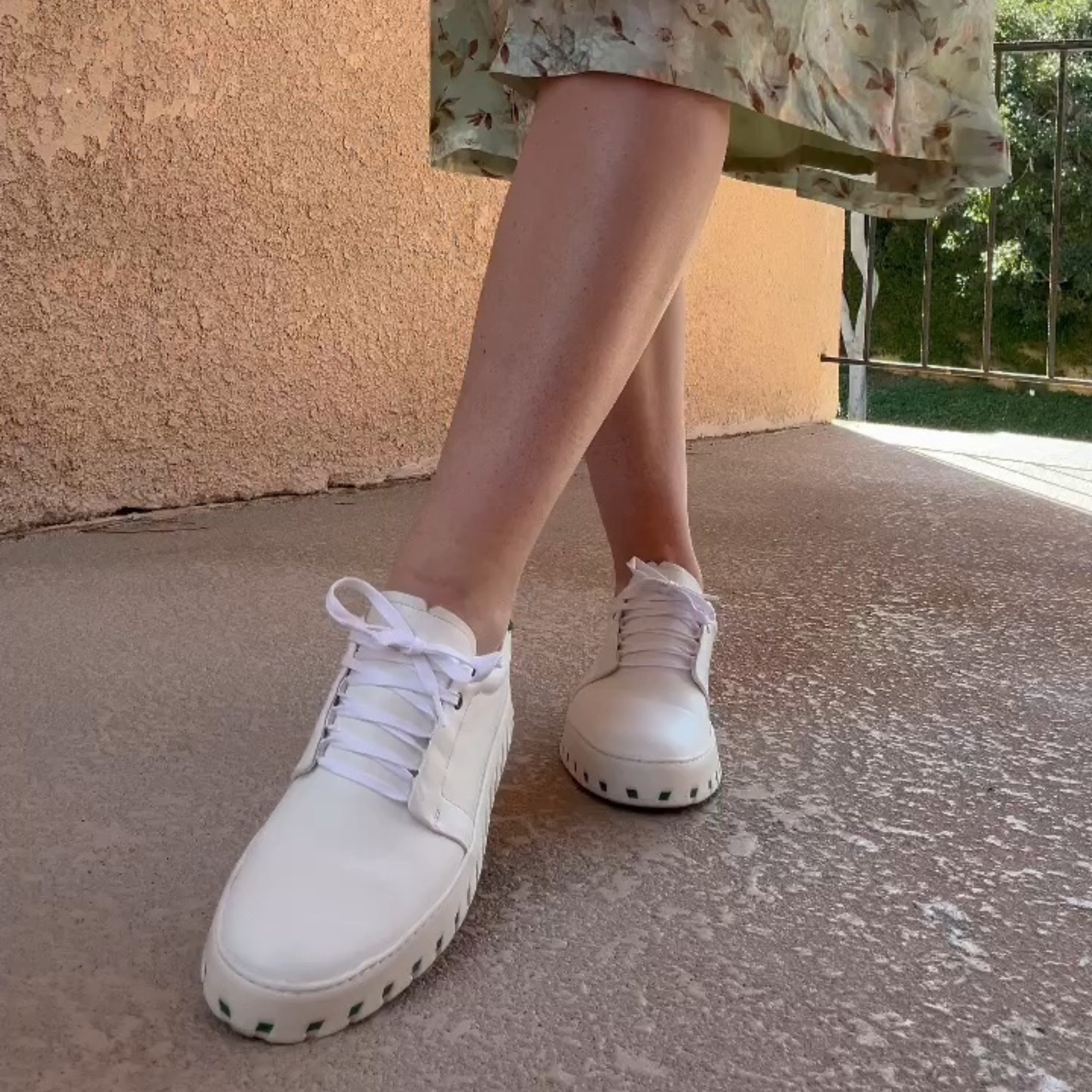

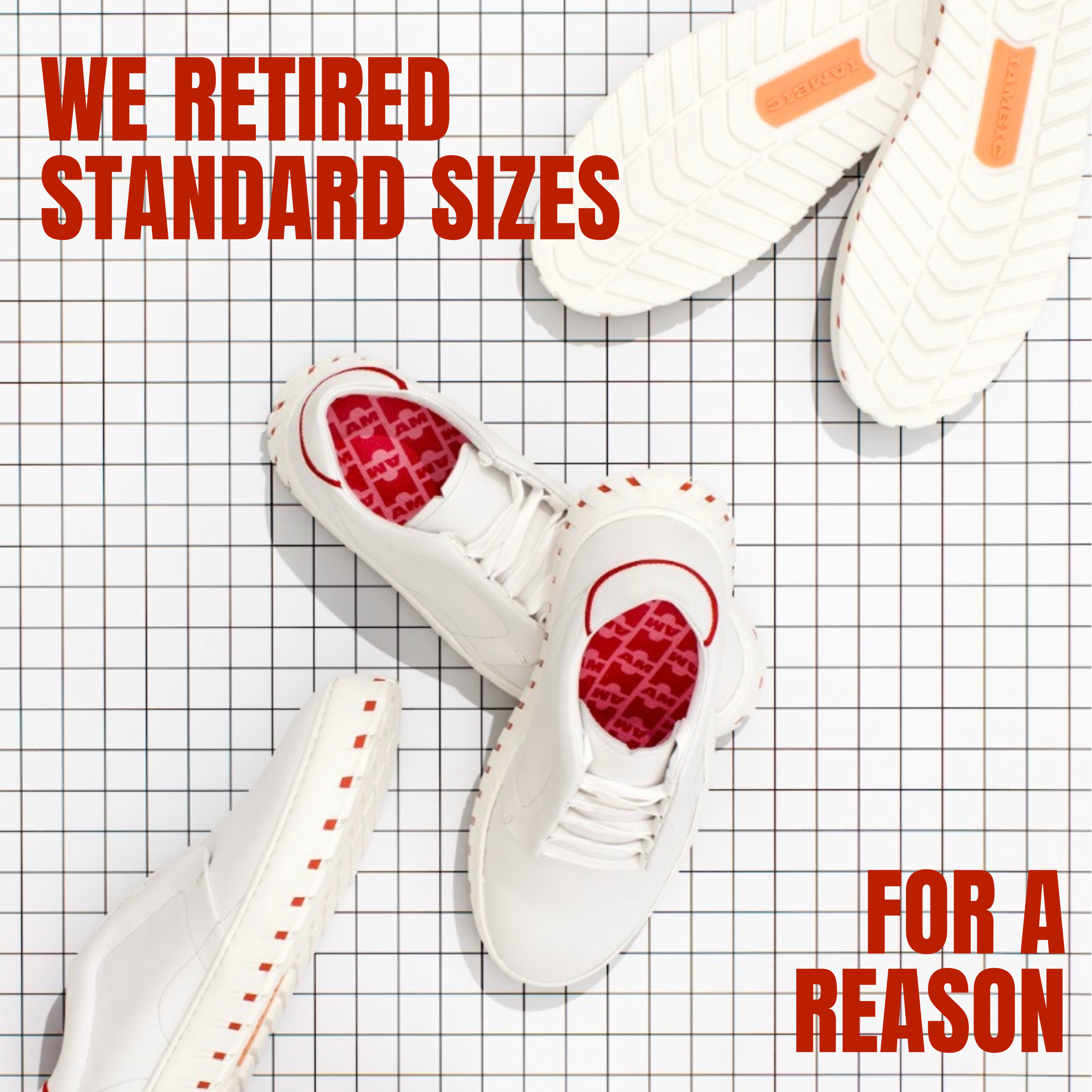
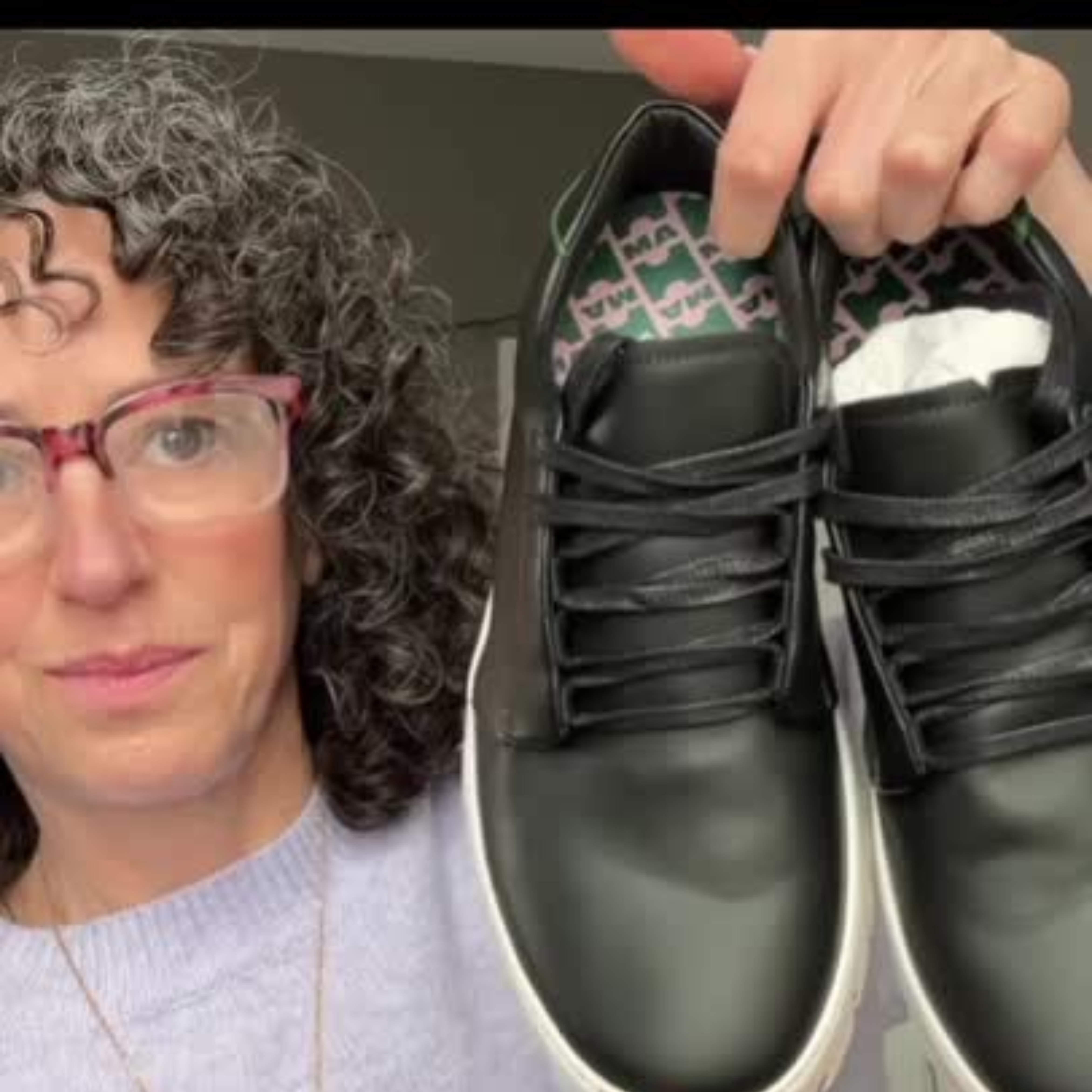

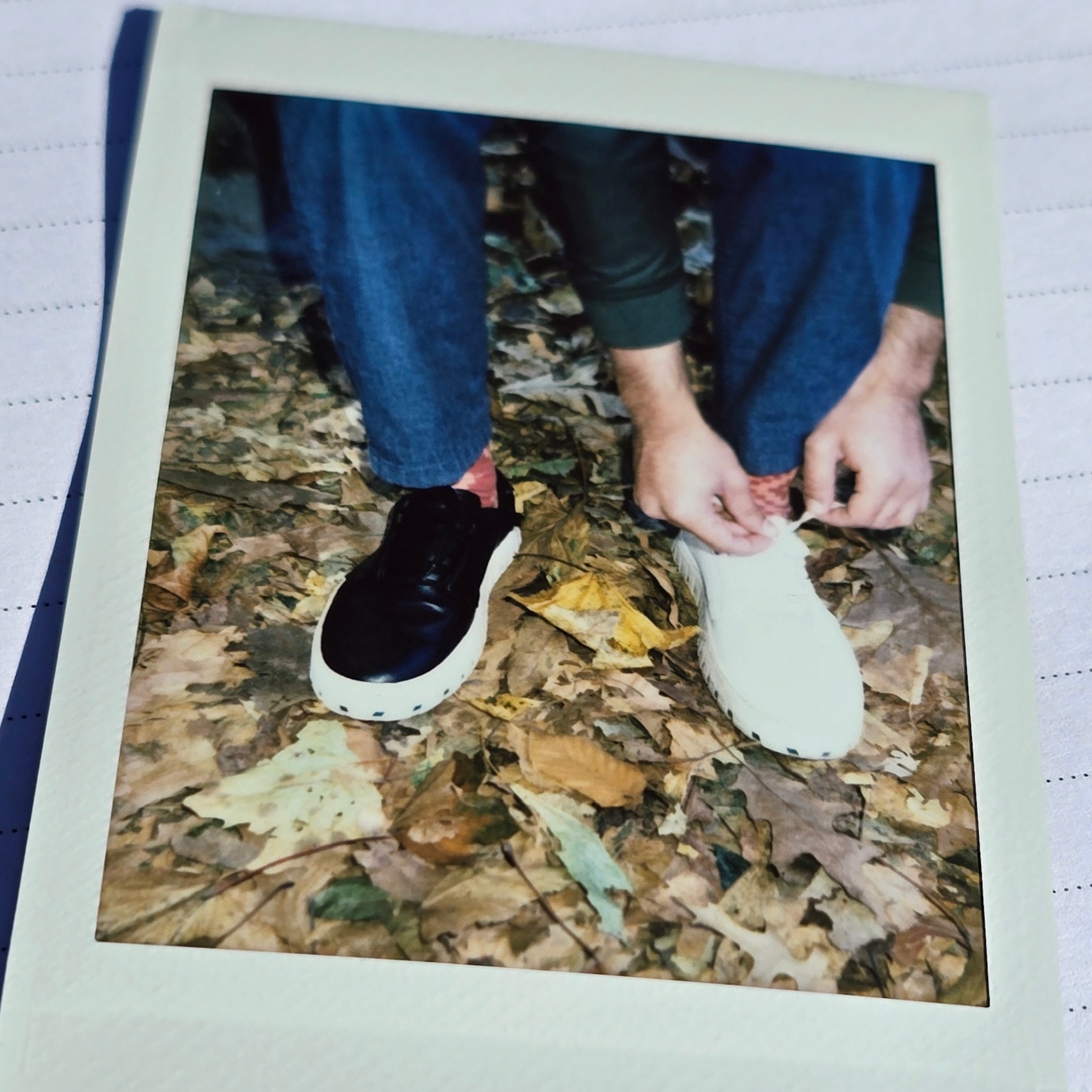
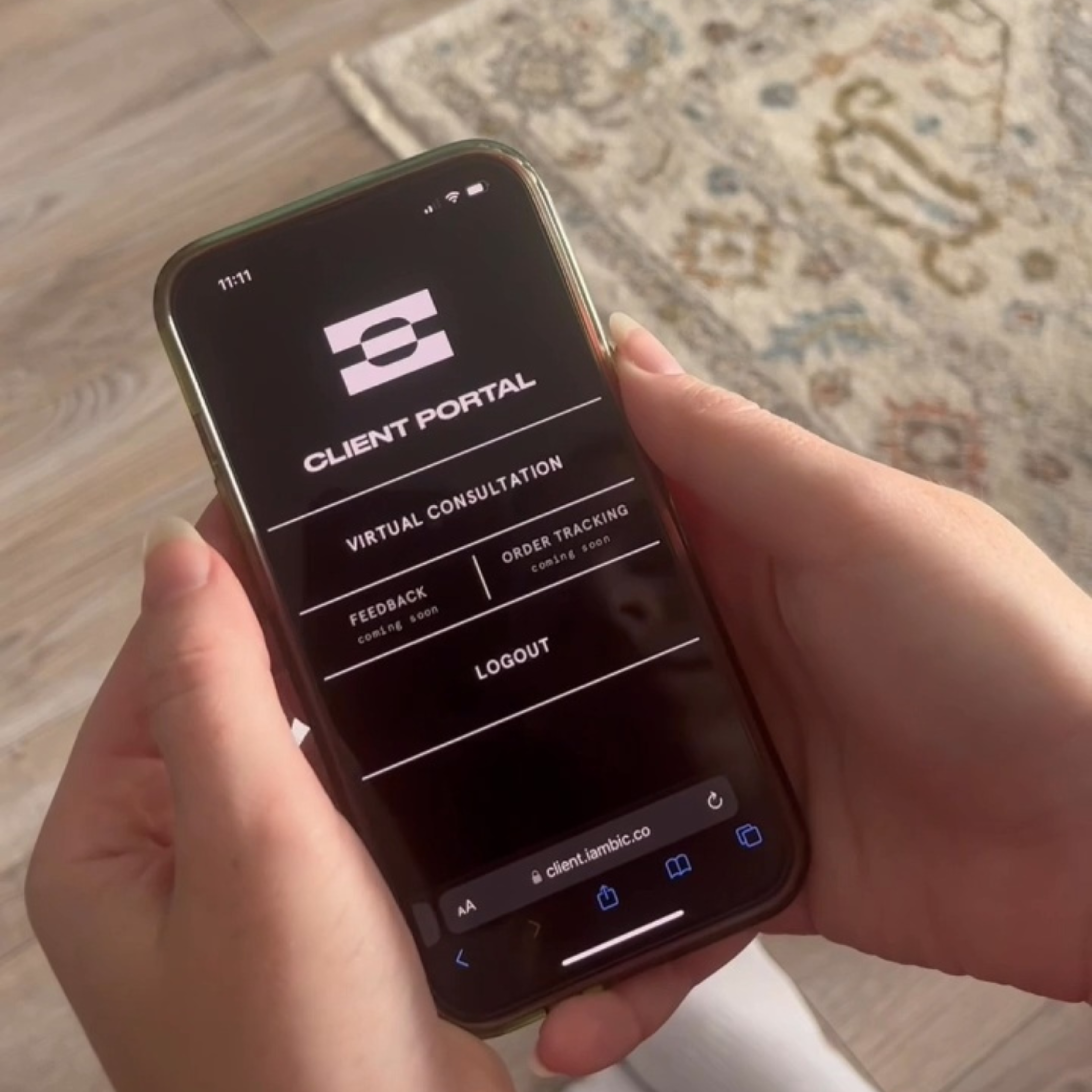
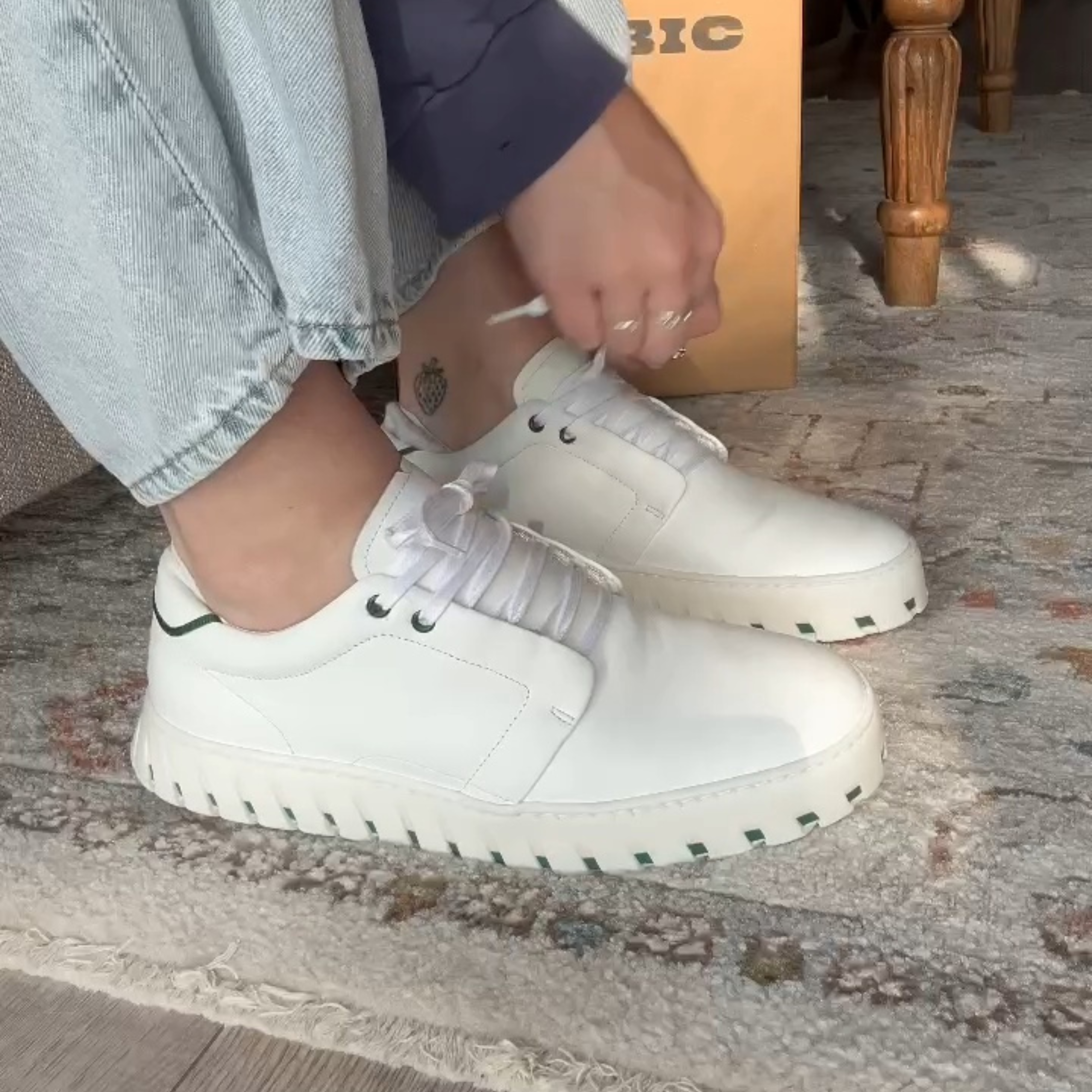
The most interesting thing about them being crafted just for me is how well they fit. And I had never even noticed that my shoes didn't fit right. My other shoes don't hurt me - they just slosh around. With these, the heels actually stay on the whole time and it fits snugly yet still comfortably. And I'd never experienced that before. They just stay comfortable all day.
As a runner, as an athlete, just knowing that I'm doing a good service to my body is incredible. It’s the reason that I love my IAMBIC shoes. It's that precision that makes me feel safe to walk down the street, get on the subway, do my commute, bring my kids to school, and not feel concerned that I'm doing it in a shoe that doesn't fit right or that doesn't feel good.
The thing that I was surprised by the most with the precision fit is that any pressure points thatI had been feeling with the shoes that I previously came in wearing were completely gone. I was wearing a shoe that wasn't too tight. It wasn't too loose. The sole fit just right. Total comfort.That's the best way to put it.
So I suffer from chronic foot pain and I believe that a lot of that has to do with wearing shoes that actually don't fit. Whenever I wear my IAMBICs, I've noticed that I have felt less pain, which is really incredible. And they're just so comfortable. I'm not worried about the back of my heel popping out or my ankles not having enough support. Also, they're just so stylish and every time I wear them out in the street, I always get compliments, which never happens to me.
A shoe that may feel comfortable for a half hour walk is not a shoe that always feels comfort able for a three and a half hour walk. So what I like about IAMBIC is, even though the snug fit is there and it feels comfortable, it also feels substantial enough that I can walk a lot without getting any discomfort. That's just something that's especially important to me and I think the shoe has really delivered that.
The first moment that I tried on my IAMBIC shoes, I noticed a difference. I have small feet. So whenever I try on shoes, I usually expect them to not fit. If they do fit, there's usually some sort of discomfort, whether that's in the toe box or too much space or at the heel. So knowing that this shoe was tailored to my foot was really meaningful. It's rare that you find a shoe like IAMBIC that truly is comfortable, but also hits the markers of style versatility.
I think we're all placed on this earth as unique individuals. None of us are really off the rack in terms of sizing. So for me to have that experience of having something made specifically for me that fit perfectly was something that was a little bit mind blowing. And once I got the shoes, I tried them on, they looked great, they felt great. And honestly, they fit like a glove.